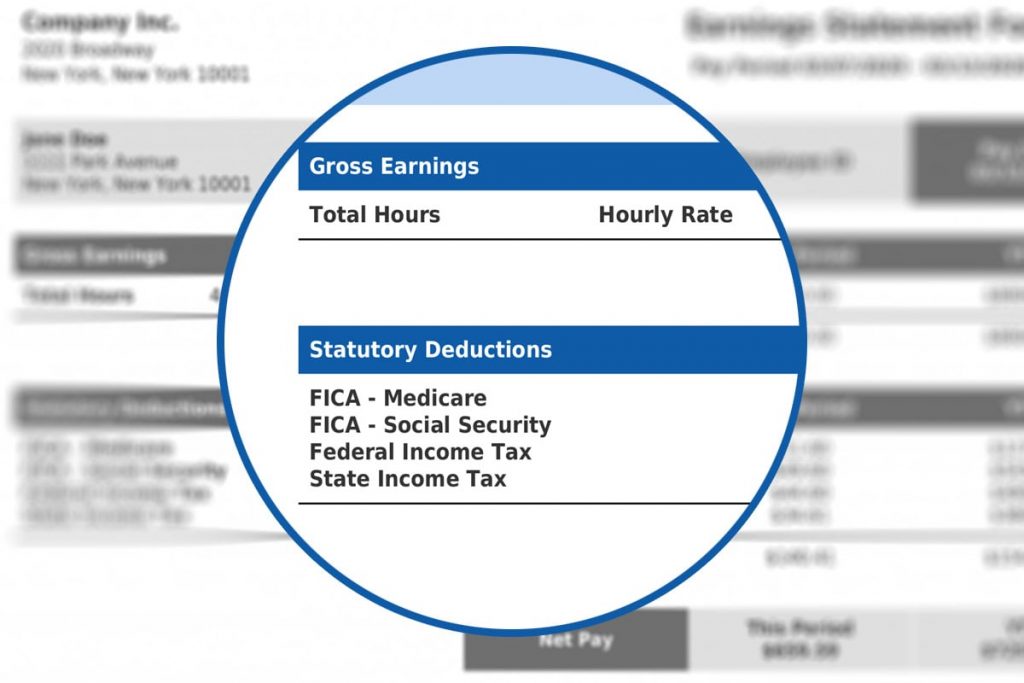What Are Pay Stub Deduction Codes?

Managing payroll requires planning.
To get payroll right, you need to have the right information, and that includes the data required to create pay stubs. A pay stub lists all of the key information related to an employee’s pay.
Both employers and workers need to understand the information on a pay stub. Employers must generate accurate pay stubs that match the gross pay, tax withholdings, and other payroll amounts. Workers need to review their pay stubs to verify that their wages were paid correctly.
This article explains the information required to create a pay stub, and reviews the most common pay stub deduction codes.
Information Needed to Create a Pay Stub
Determine this information for each employee:
- Payroll cycle: The number of pay periods determines how much salary is paid on each payroll date. It also determines the start and ending days for computing hourly payroll.
- Wages: Gross pay and net pay. Wages may be based on a salary, or calculated using an hourly rate of pay.
- Tax withholdings: Federal, state, and possibly local amounts withheld for taxes.
- Benefit withholdings: Amounts withheld for the employee’s share of insurance premiums, or funds to be invested in a retirement plan.
The rules regarding pay stubs vary by state. Some states require employers to provide pay stubs to workers, while other states do not. Businesses should confirm the requirements in each state where they employ workers.
Employees should keep their most recent pay stubs as proof of income. If an individual applies for a loan, the pay stub confirms the borrower’s gross income. The pay stub information should match the data on each employee’s year-end W-2 form, which individuals used to file their personal tax returns.

Understanding FICA, FUTA and SUTA Taxes
A pay stub must report FICA, FUTA, and SUTA tax information.
FICA tax is collected to fund Social Security and Medicare. For 2020, the employee tax for Social Security is 6.2% on income earned up to $137,700. The Medicare tax rate is 1.45% on all wages, and high-income taxpayers will pay an additional 0.9% tax for Medicare. If a worker is not a high-income taxpayer, total employee FICA tax rate is 7.65% in 2020.
Employers also pay 7.65%, and the cost is deducted as a business expense. The employer’s payments are typically included on the pay stub.
Unemployment programs are funded by the FUTA tax (federal) and the SUTA tax (state). These amounts are paid by the employer, but also reported on the pay stub.
Pay Stub Deduction Codes
Here are the most common pay stub deduction codes:
- FED, FIT, or FWT: Federal income tax withholding
- State, SIT, or SWT: State income tax withholding
- FICA: FICA taxes paid for Medicare and Social Security
- YTD: Year-to-date
- MED: Insurance deductions for health, vision, or dental insurance
- INS: Insurance deductions for other coverage, such as life insurance
- 401(k) or RET: 401(k) contributions into a retirement plan
- FSA or HSA: Contributions into a flexible spending account (FSA), or a health savings account (HSA)
Employers who create pay stubs must understand each of these codes, and the codes should be explained to all workers.
Take Charge of the Process
Employees need to generate accurate pay stubs, and using technology can help.
FormPros provides a pay stub generator that is user friendly, and helps you produce accurate pay stubs in less time. Use FormPros to take charge of the pay stub process.